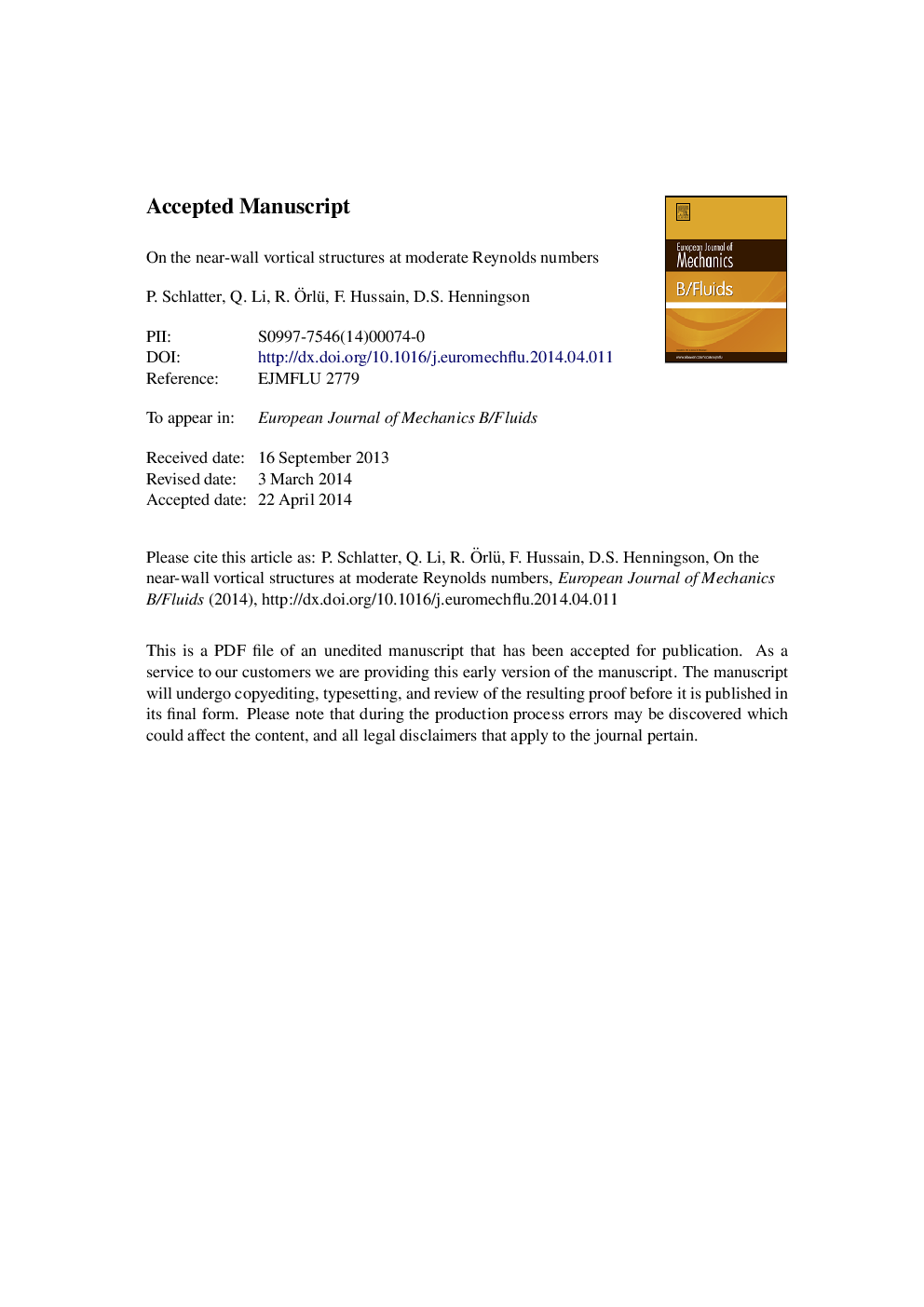| کد مقاله | کد نشریه | سال انتشار | مقاله انگلیسی | نسخه تمام متن |
|---|---|---|---|---|
| 650386 | 1457278 | 2014 | 26 صفحه PDF | دانلود رایگان |
عنوان انگلیسی مقاله ISI
On the near-wall vortical structures at moderate Reynolds numbers
ترجمه فارسی عنوان
در ساختارهای گرداب نزدیک دیوار در تعداد رینولدز متوسط
دانلود مقاله + سفارش ترجمه
دانلود مقاله ISI انگلیسی
رایگان برای ایرانیان
کلمات کلیدی
لایه مرزی آشفته آشفتگی دیوار، هلی کوپترها شبیه سازی مستقیم عددی،
موضوعات مرتبط
مهندسی و علوم پایه
مهندسی شیمی
جریان سیال و فرایندهای انتقال
چکیده انگلیسی
A recent database from direct numerical simulation (DNS) of a turbulent boundary layer up to Reθ=4300 (Schlatter and Ãrlü, 2010) is analysed to extract the dominant flow structures in the near-wall region. In particular, the question of whether hairpin vortices are significant features of near-wall turbulence is addressed. A number of different methods based on the λ2 criterion (Jeong and Hussain, 1995) is used to extract turbulent coherent structures: three-dimensional flow visualisation with quantitative estimates of hairpin population, conditional averaging and planar hairpin vortex signatures (HVS). First, visualisations show that during the initial phase of laminar-turbulent transition induced via tripping, hairpin vortices evolving from transitional Î vortices are numerous and can be considered as the dominant structure of the immediate post-transition stage of the boundary layer. This is in agreement with previous experiments and low-Reynolds-number simulations such as Wu & Moin (2009). When the Reynolds number is increased, the fraction of hairpin vortices decreases to less than 2% for Reθ>4000. Second, conditional ensemble averages (Jeong et al., 1997) find hairpins close to the wall at low Reynolds number, while at a sufficient distance downstream from transition, the flow close to the wall is dominated by single quasi-streamwise vortices; even quantitatively, no major differences between boundary layer and channel can be detected. Moreover, three-dimensional visualisations of the neighbourhood of regions of strong swirling motion in planar cuts through the layer (the HVS) do not reveal hairpin vortices, thereby impairing statistical evidences based on HVS. The present results thus clearly confirm that transitional hairpin vortices do not persist in fully developed turbulent boundary layers, and that their dominant appearance as instantaneous flow structures in the outer boundary-layer region is very unlikely.
ناشر
Database: Elsevier - ScienceDirect (ساینس دایرکت)
Journal: European Journal of Mechanics - B/Fluids - Volume 48, NovemberâDecember 2014, Pages 75-93
Journal: European Journal of Mechanics - B/Fluids - Volume 48, NovemberâDecember 2014, Pages 75-93
نویسندگان
P. Schlatter, Q. Li, R. Ãrlü, F. Hussain, D.S. Henningson,
